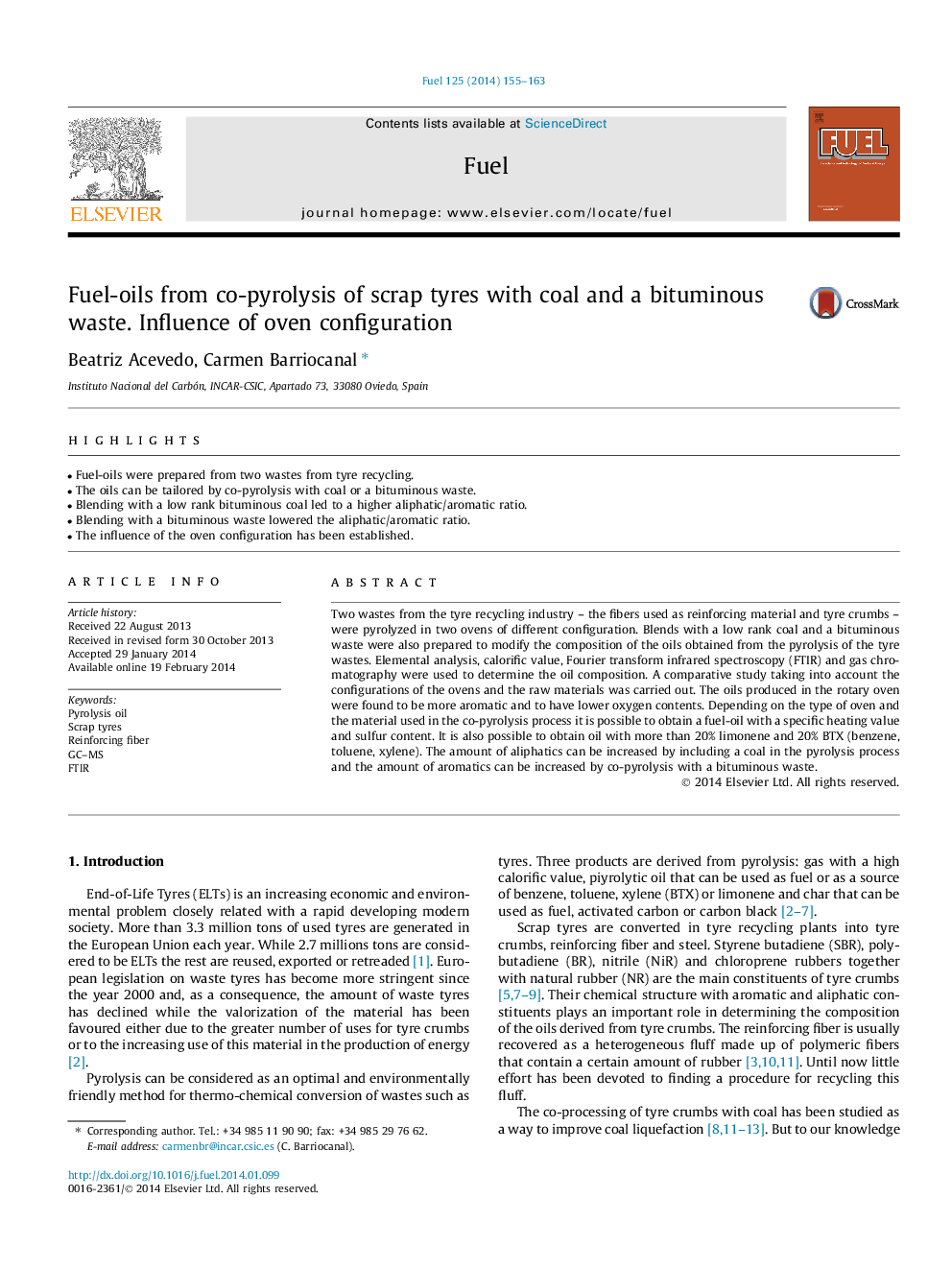| Article ID | Journal | Published Year | Pages | File Type |
|---|---|---|---|---|
| 6637893 | Fuel | 2014 | 9 Pages |
Abstract
Two wastes from the tyre recycling industry - the fibers used as reinforcing material and tyre crumbs - were pyrolyzed in two ovens of different configuration. Blends with a low rank coal and a bituminous waste were also prepared to modify the composition of the oils obtained from the pyrolysis of the tyre wastes. Elemental analysis, calorific value, Fourier transform infrared spectroscopy (FTIR) and gas chromatography were used to determine the oil composition. A comparative study taking into account the configurations of the ovens and the raw materials was carried out. The oils produced in the rotary oven were found to be more aromatic and to have lower oxygen contents. Depending on the type of oven and the material used in the co-pyrolysis process it is possible to obtain a fuel-oil with a specific heating value and sulfur content. It is also possible to obtain oil with more than 20% limonene and 20% BTX (benzene, toluene, xylene). The amount of aliphatics can be increased by including a coal in the pyrolysis process and the amount of aromatics can be increased by co-pyrolysis with a bituminous waste.
Keywords
Related Topics
Physical Sciences and Engineering
Chemical Engineering
Chemical Engineering (General)
Authors
Beatriz Acevedo, Carmen Barriocanal,
